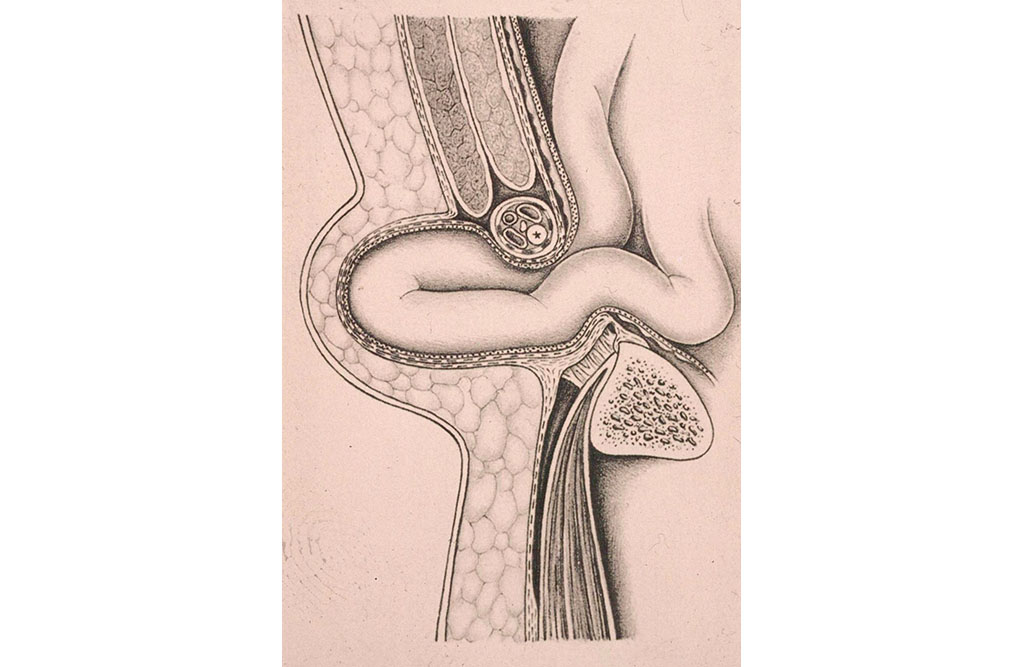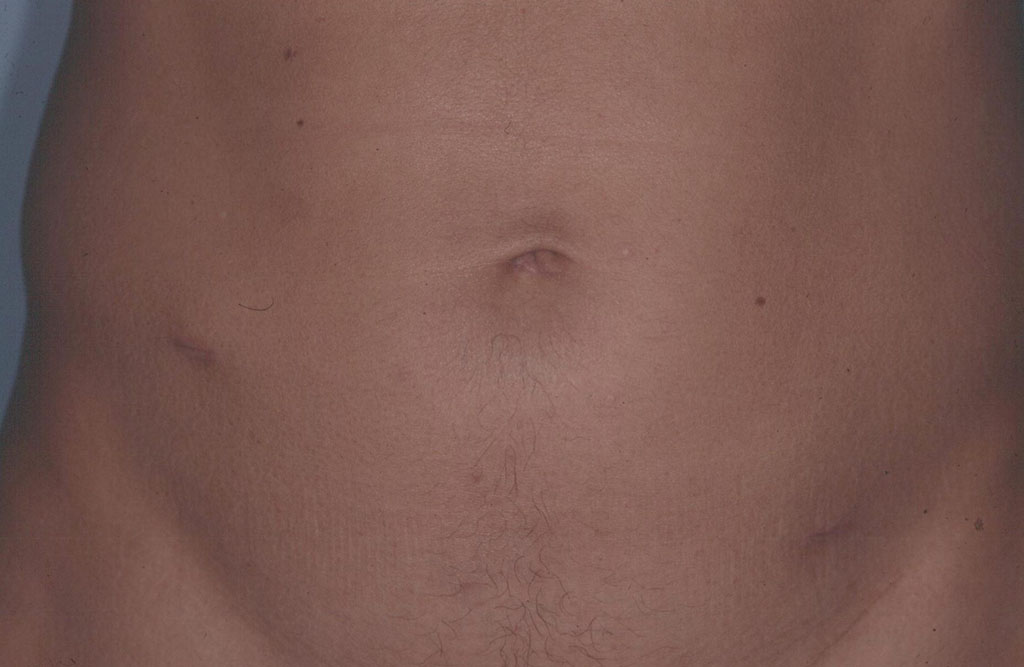Inguinal Hernia
Inguinal hernia is one of the most common hernias, along with umbilical, femoral and scar hernias. This hernia is diagnosed in some four percent of adults, as many as ninety percent of whom men. An inguinal hernia can only be treated with surgery.
The abdominal wall is made up of the inner and outer layers of the skin, connective tissue, muscles, tendons and peritoneum; it encloses the front and sides of the abdomen and contributes importantly to the flexibility of the trunk. It can, however, happen that a weak spot develops at a point where the different layers of the abdominal wall converge, with an opening through which a portion of the intestine can emerge. This usually happens where the spermatic cord passes through the abdominal wall.
Men are much more likely to develop an inguinal hernia because the inguinal canal is a weak point in the lower abdomen. Along the spermatic cord, abdominal organs can pass through the inguinal canal and appear externally as a bulge. Weak connective tissue or a certain kinds of pressure (lifting a heavy object, coughing spells) can contribute to the development of an inguinal hernia, which is only painful in the early stage. With time, the hernia ring gradually expands and the opening enlarges, while the hernia still does not cause much discomfort. In the advanced stage, when portions of the small or large intestine emerge from the opening, it is easy to see and feel the hernia. A sure sign of an inguinal hernia is a bulge in the groin that is apparent in the standing position but that disappears upon lying down.
An inguinal hernia will not heal on its own and must be treated surgically. Usually an elective operation can be planned and only rarely is emergency surgery required. This can be the case when contents of the hernia, such as a loop of intestine, become trapped (incarcerated) and threaten to become necrotic due to lack of blood supply. Then there is the danger of intestinal occlusion or peritonitis and surgery must be undertaken immediately.
Surgical methods
Conventional open surgery
An incision of some 5 cm is made in the skin and the hernia is closed with sutures. If the connective tissue is very weak, a synthetic mesh is inserted to provide additional support. This method is usually used for an inguinal hernia on one side that has not been operated previously. The advantage of this open suture technique is that it involves few complications and can, if necessary, be performed in local anesthesia. This method has been used for many years and the recurrence rate is very low.
Laparoscopic surgery
The slender instruments are inserted into the abdominal cavity through three small incisions in the skin. The hernia ring is closed from the inside with a synthetic mesh. This technique is preferred for correcting recurrences, and for hernias on both sides. The advantage is that patients recover quickly and can resume sports somewhat sooner.
After a few days in hospital and a few weeks of recuperation, normal activities can be resumed.


